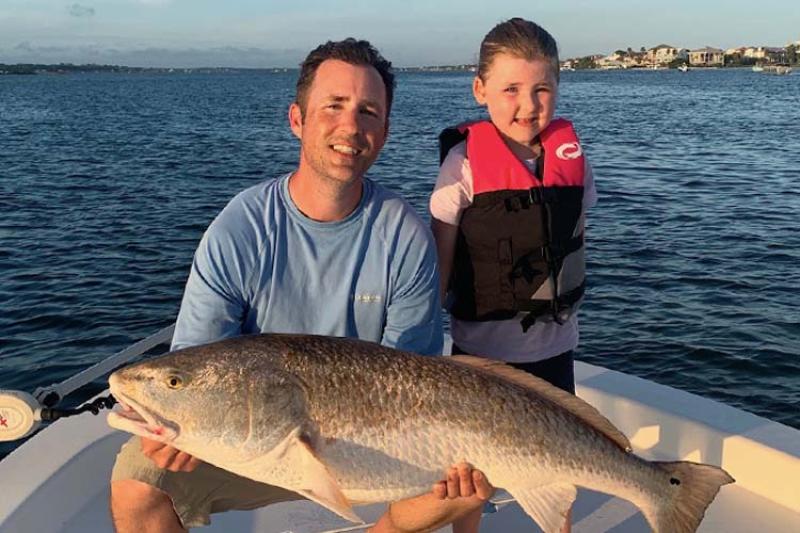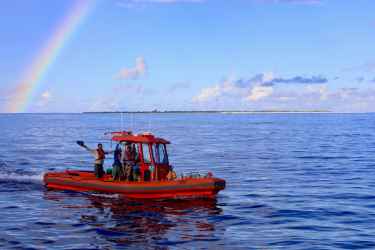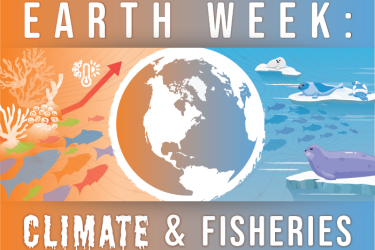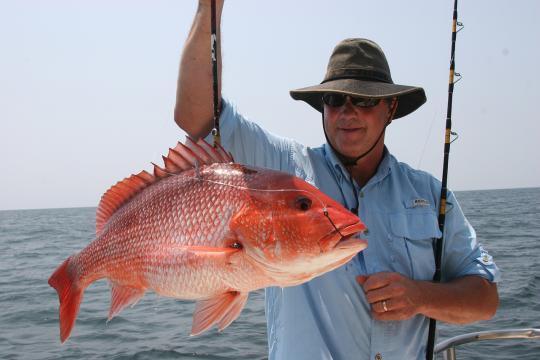Saltwater anglers, for-hire captains, and other members of the recreational fishing community often ask how we collect recreational fishing data. They also want to know how we use that data to estimate total recreational catch. Our Ask MRIP web series answers your questions about the science and statistics that support sustainable fishing.
What types of errors affect surveys?
Sampling Errors
While we take steps to reduce errors in our recreational fishing surveys, it's impossible to eliminate them entirely. Some errors are inherent in the act of sampling. These are known as sampling errors, and they are quantifiable—meaning we can determine how they impact our estimates. The size of the error depends on:
- Sample size, or the number of people we survey
- Sample design, or who and how we decide to survey
- Differences among members of the population being sampled
Non-sampling Errors
Errors not due to sampling are known as non-sampling errors. They can be random or systematic and can occur regardless of whether data are collected through a sample survey or a census. Common non-sampling errors include:
- Coverage error, which occurs when members of a target population are omitted, duplicated, or wrongly included in the list of people who are going to be surveyed, known as the sample frame
- Measurement error, which occurs when a respondent provides an inaccurate response to a survey question
- Nonresponse error, which occurs when a respondent is unable or unwilling to respond to a survey
- Data processing error, which can occur while entering, coding, editing, or otherwise preparing survey data for use
As an example, non-sampling error would occur if anglers at a particular marina declined to participate in our dockside survey, and their fishing activities were different from anglers in neighboring marinas who did participate. In this case, the non-sampling error would be non-response. These types of errors result in recreational catch estimates that are inaccurate because one type of fishing activity is not being represented in the survey.
Sampling and non-sampling errors affect or are present in all surveys, not just ours.
How do errors impact recreational catch and effort estimates?
Sampling errors impact the precision of our recreational catch estimates, or how confident we can be in the specific number of fish, trips, or pounds we report. Precision is represented by a confidence interval as a part of each estimate. It shows—with a 95 percent degree of certainty—what the maximum and minimum value associated with that estimate could be. The larger the interval, the less confident we can be that our estimate reflects the true value of what we’re measuring.
Non-sampling errors can impact both the precision and accuracy of our estimates. When these errors are random, they can reduce precision, but generally don't create a bias. When they are systematic, either consistently high or low, then these errors can introduce bias in the estimates.
How does NOAA Fisheries reduce the potential for survey errors?
We take many steps to help ensure our total catch estimates are accurate and precise. We start by designing research and pilot studies that reduce the potential for survey error. Survey error can result in bias, which impacts the quality of an estimate. Reducing survey error reduces the potential for bias, and reducing the potential for bias increases the accuracy of our catch estimates. We use efficient sampling designs with robust sample sizes to help improve the precision of our estimates.
It’s important to note that putting a survey into practice is not the last part of the process. Any time we implement a survey, we continue to research sources of error so our existing—and future—survey designs can be improved.
Best Practices
We follow a number of best practices in our recreational fishing data collection efforts, such as working to reduce nonresponse errors in our Fishing Effort Survey by offering a small cash incentive to recipients, and reducing nonresponse errors in the same survey by designing it to appeal to anyone who receives it, not just anglers. Our best practices mirror those in place at the National Center for Health Statistics, U.S. Census Bureau, and other federal statistical agencies. Additionally, we follow quality control and quality assurance procedures to help us find, correct, and, wherever possible, reduce data processing errors.
Continuous Improvement Through Survey Research
Working with in-house experts and statistical consultants, we conduct extensive research to improve our surveys on an ongoing basis. For example, from 2009 to 2021, we implemented 10 pilot studies to evaluate non-sampling errors such as coverage, measurement, and nonresponse in surveys of fishing effort. In 2021, we implemented a pilot study to evaluate non-sampling errors in the Access Point Angler Intercept Survey. To date, we have funded more than 100 pilot studies, workshops, independent consultant reviews, and other projects to improve recreational fishing surveys across the United States.
Increasing Sample Size
In 2020 and 2021, NOAA Fisheries administered $3 million in Modern Fish Act investment funds to increase sampling levels in the Atlantic, Pacific, and Gulf of Mexico. We will administer these funds again in 2022. The funds are intended to reduce sampling error and improve the precision of regional catch estimates. We have been collaborating with our partners at the regional Fisheries Information Networks to apply these funds in ways that create the greatest benefit.
Why is this important to anglers?
The recreational fishing community is our primary source of recreational fishing data. These data help scientists assess the size and health of fish populations. In turn, these scientific reports help managers set catch limits and fishing regulations to maintain healthy and productive fish stocks. When anglers like you provide complete and accurate answers during a field interview or on a fishing effort survey, you’re helping to improve the quality of recreational fishing data by reducing non-sampling error. You’re also making a vital contribution to science, management, and the sustainability of a great American pastime.
Have a question?
For more answers to your questions about recreational fishing data, read the first two posts in our Ask MRIP web series. If you have a question you’d like us to answer, email Fisheries.MRIP@noaa.gov.






